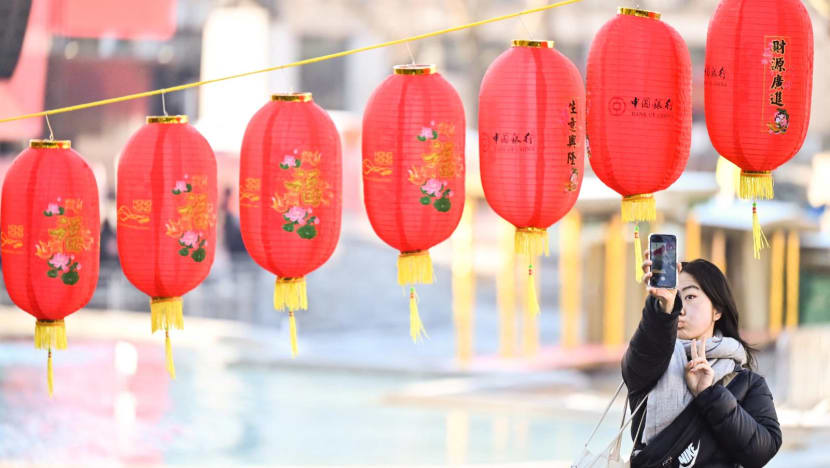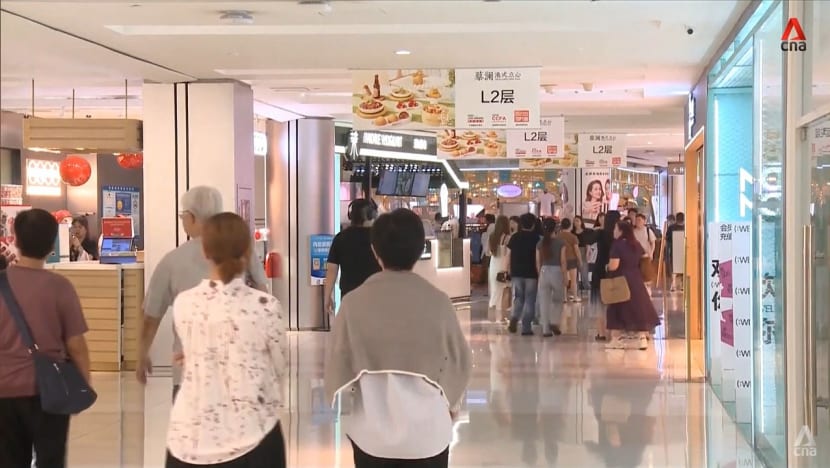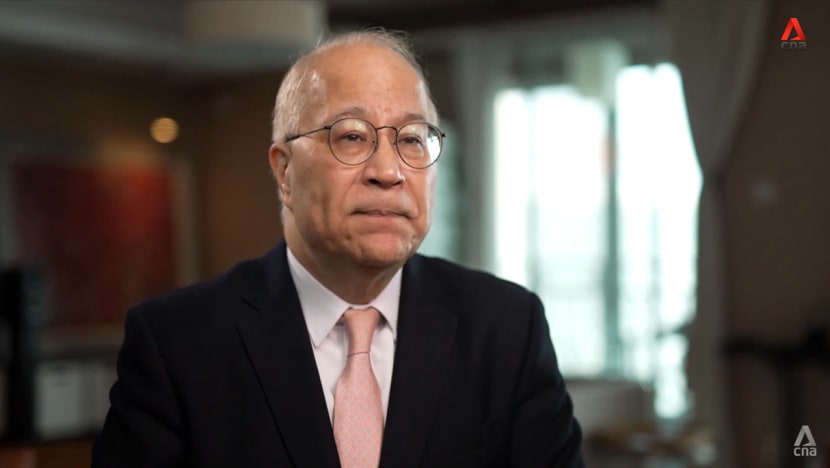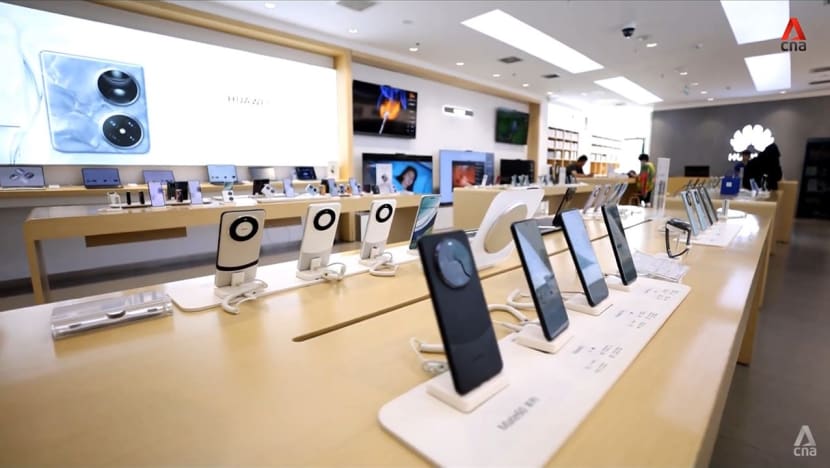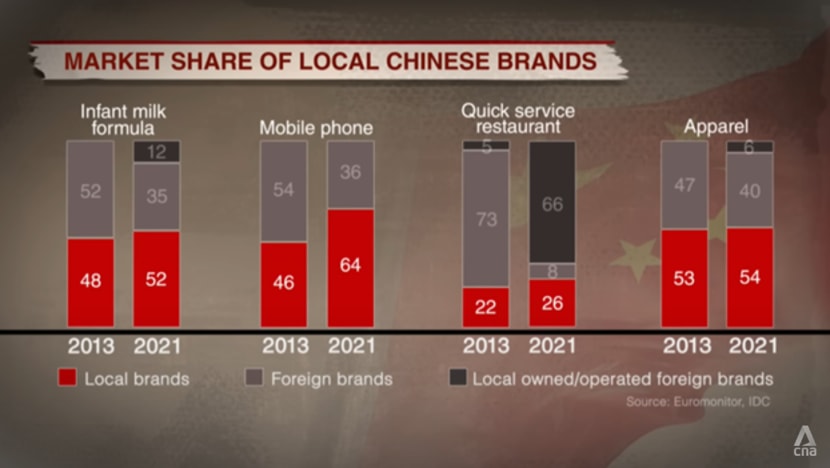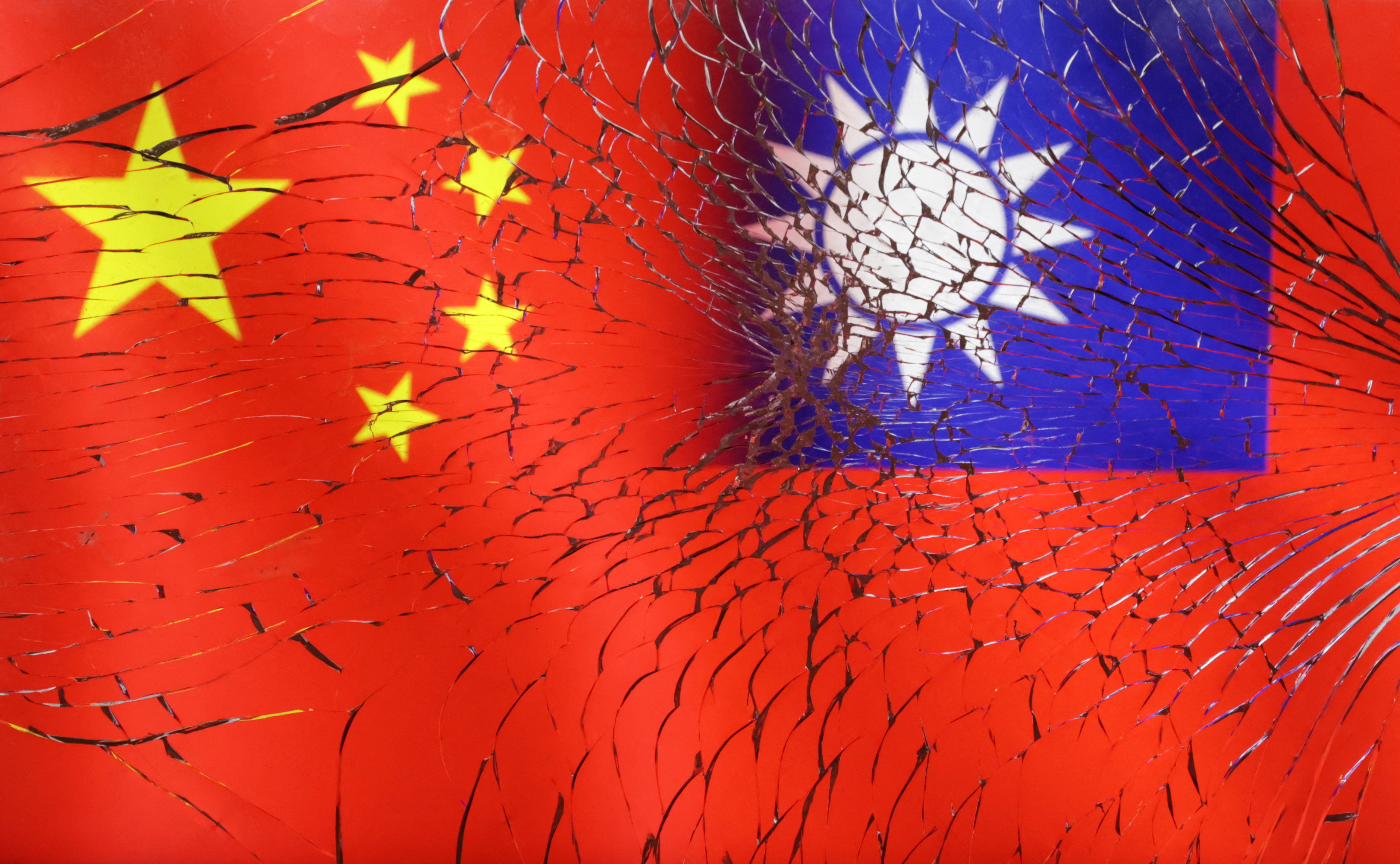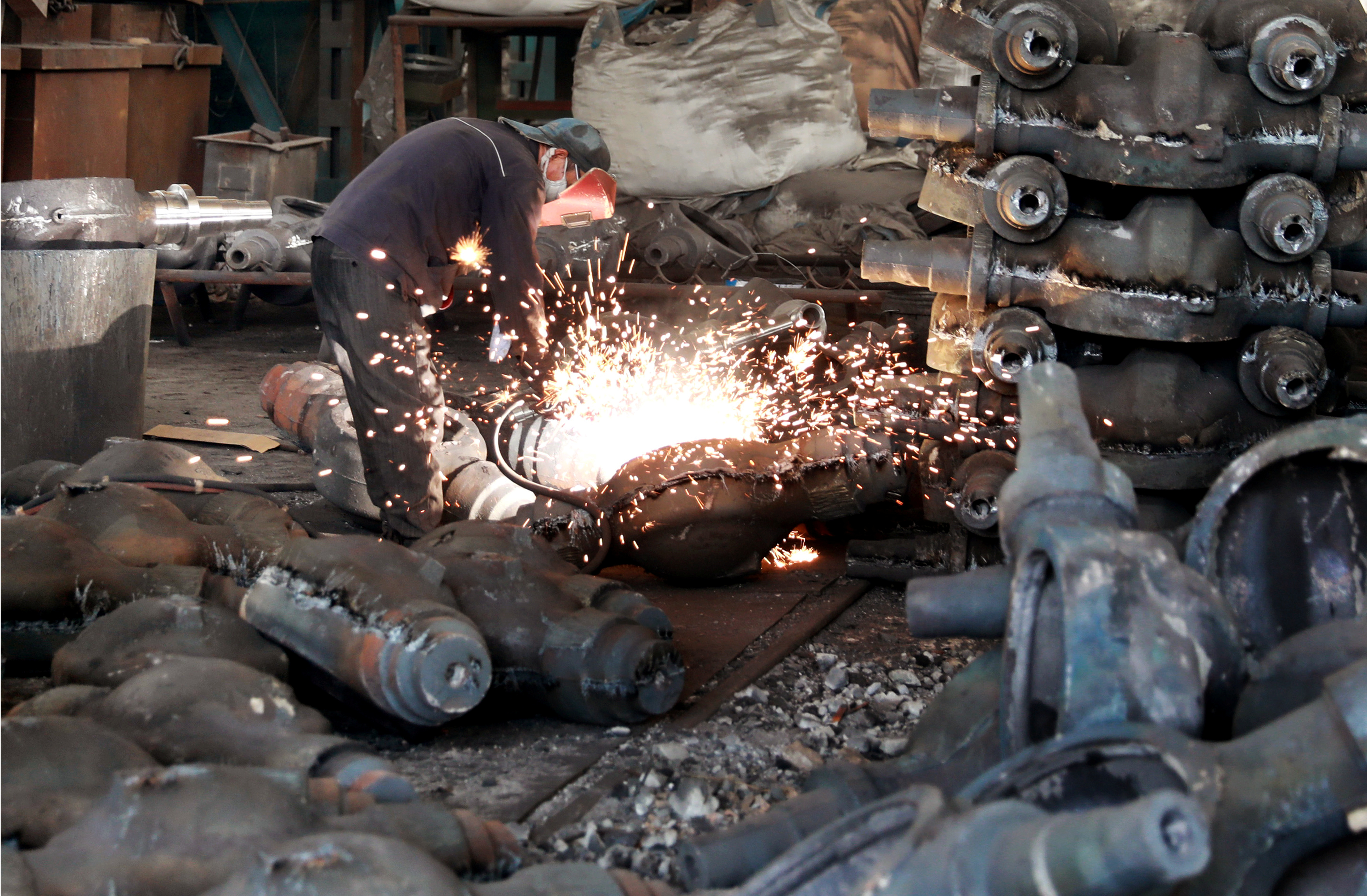
Best News Website
Made in China, for China: Is patriotism the answer to its weakening economy?
With China’s growth target of 5 per cent this year deemed ambitious, the programme Insight looks at the factors behind its economic challenges and whether relying on domestic spending and innovation can steer its economy towards recovery.
China’s government wants Chinese consumers to spend their way to growth.
Listen to this article
10 min
New: You can now listen to articles.
This audio is generated by an AI tool.
 Faith Leong
Faith Leong &
Nicholas Deroose
30 Jun 2024 06:00AM
BookmarkShare
BEIJING: Living in Beijing, where “allergens are flying around”, 26-year-old Yao Yao is very particular about her cosmetics — they must protect her skin.
She spends about 500 yuan (S$93) a month on make-up and has quite a collection. She has, however, stopped looking for imported brands.
ADVERTISEMENT
“Maybe in the past, people used big brands … to gain face. But the thinking of young people now is that if we use domestic products, we’ll truly ‘have face,’” she said.
Her words speak to a growing trend among China’s youth: Imported goods are out, Made-in-China is in. They call it “guo chao”, which translates as “national wave”.
But it is not just a swell of patriotism that spurs Chinese consumers to opt for home-grown products over foreign ones. They prioritise domestic brands for the affordability and quality too, indicated a
McKinsey report last year.
Yao Yao browsing in a cosmetics shop.
For avid mobile gamer Lei Dongsheng, 24, who switched from Apple to Xiaomi in 2012, the Chinese smartphone brand’s “price-to-performance ratio is relatively higher than other brands, and the experience after using it is also good”, he cited.
And for make-up enthusiast Yao, even Chinese lipsticks and lip glosses are easier to use and more practical than international brands.
ADVERTISEMENT
Nonetheless, domestic consumption is a weak link in the Chinese economy.
Even though China’s gross domestic product grew by a healthy 5.2 per cent last year, aided by “a wave of revenge spending”, the momentum sputtered in the second half of the year, said Heron Lim, an economist at Moody’s Analytics.
Revenge spending helped lift China’s services and retail sectors in the first half of last year.
China wants its citizens to buy more and buy local, especially with the country finding its rise stymied by geopolitical tensions.
A target of around 5 per cent GDP growth has been set for this year. This would almost match the growth rate achieved last year but is higher than the International Monetary Fund’s forecast of
4.6 per cent.
ADVERTISEMENT
Many have described this target as ambitious.
The
programme Insight explores why China is facing economic headwinds and whether a surge in nationalism and “new productive forces”, as Beijing calls it, will be enough to lift the economy out of its slump.
Made in China only: China looks domestically for growth, but will it succeed? (46:36)
CAUTIOUS SPENDING ADDS TO PROBLEMS
Over the past four decades, China’s
economic growth was propelled by market incentives, cheap labour, exports, foreign direct investment and infrastructure building. But that era has passed, especially with regard to infrastructure.
According to Lim, reduced construction activity and property sales have dampened demand in the property market, which impacts about 30 per cent of the Chinese economy.
ADVERTISEMENT
Compounding the issue, the real estate sector serves as the main revenue stream for local governments, with leases typically spanning 70 years and generating significant income for authorities.
Consequently, the revenue loss hampers municipal governments’ ability to stimulate local economies. With high existing debt burdens, local governments are also unable to increase their debt levels in response to new economic shocks, further limiting their ability to react effectively.
Related articles:


Furthermore, the United States has tightened restrictions on China, including limits on access to new technology, since the Trump administration’s trade war, noted Natixis senior economist Gary Ng.
Internally, people are pinching pennies too.
Gig worker Li Yu Chen, for example, goes to local neighbourhood shops instead of supermarkets for his weekly groceries. The 29-year-old has also put off buying new shoes and clothes owing to his unstable income.
Cautious spending is not limited to those without full-time employment. In 2022, new household deposits reached a record 17.9 trillion yuan, an increase of about 8 trillion yuan from 2021. Last year, China’s households stashed away another 16.67 trillion yuan.
Lim observed that despite generally stable prices and even some cases of deflation in China, it was prudent for the average consumer to save now and capitalise on future price cuts.
Heron Lim, an assistant director and economist at Moody’s Analytics, speaking to Insight.
“Increased economic uncertainty also increases, in Chinese consumers, a willingness to save,” he added. “They’re less likely to open their wallets to spend on new products and services.”
To encourage spending, the latest government plans include a trade-in programme — details were unveiled in April — with discounts and subsidies for households looking to upgrade their old appliances and cars.
“But it’s quite hard to get people to spend if the sentiment is weak,” said Ng.
RIDING THE ‘NATIONAL WAVE’
The good news is that per capita disposable income increased by 6.2 per cent last year, providing greater purchasing power to fuel “a virtuous cycle of reasonable consumption that can keep the economy going”, said Beijing-based analyst Einar Tangen.
Einar Tangen is a senior fellow at think-tank Taihe Institute.
Then there is “guo chao”, which might be not only a fad but a fix. This youth-led movement has already dominated China’s fashion scene, with eight in 10 fashion consumers being Gen Z and millennials.
According to Daxue Consulting, 75 per cent of Chinese consumers surveyed said they liked products with “guo chao” design elements, while 32 per cent reported checking the country of manufacturing when shopping online.
Yao put it thus: “It’s better to choose and promote our own brand, to (push) forward our own Chinese culture.”
These nationalistic sentiments can serve as a trump card in bolstering local economies, industries and brands, particularly in competition with foreign counterparts, said Chen Gang, the deputy director of the National University of Singapore’s East Asian Institute.
Dr Chen Gang is also a senior research fellow of the East Asian Institute.
Such is the strength of this pride that foreign brands risk severe criticism if they offend Chinese national sentiments.
For instance, in 2018, Dolce and Gabbana faced accusations of racism when its social media advertising campaign included stereotypes of Chinese culture. The backlash led to the removal of its products from online platforms and demands for refunds from consumers.
Similar repercussions followed when brands such as Burberry and H&M announced they would no longer source cotton from Xinjiang, which led to boycotts.
That said, relying solely on local pride is not enough to sell products — quality must also be assured.
In March, a Wall Street Journal report exposed Document 79, a state directive for Chinese entities to replace foreign technology with domestically developed alternatives and to prioritise innovation-driven development by 2027.
The once-secret initiative is well underway. Huawei recently made the headlines when it introduced a new phone featuring a domestically produced
7-nanometre chip, dispelling earlier doubts about China’s capabilities in advanced hardware manufacturing.
Huawei became China’s top smartphone brand in the first quarter of the year, analyst firms IDC and Canalys found.
Beijing has also committed an additional 344 billion yuan to turbocharge China’s semiconductor industry, underscoring the country’s dedication to advancing technological self-reliance.
And because Chinese manufacturers are moving up the value chain, nationalistic sentiments are not the only reason consumers trust domestic brands, remarked Chen.
Over the past decade, domestic brands have expanded their market share across various sectors, from mobile phones to infant formula to fast food restaurants, according to Euromonitor.
HIGH-TECH HOPES, HIGH STAKES
What impact will economic nationalism have, however, on foreign companies? After all, through its investments in domestic industries, China risks alienating foreign firms who are already losing market share to local competitors.
To assuage multinationals’ fears, Beijing has reiterated that there is no reverse globalisation on its part.
China wants instead to shift its emphasis away from being the world’s factory to a high-tech, high-value industry capable of exporting products in green tech, artificial intelligence, quantum computing and biotech.
To support these “new productive forces”, the central government increased its science and technology budget by 10 per cent this year, compared to last year’s 2 per cent increase.
One of China’s standout successes is Chinese car brand BYD. Backed by investment tycoon Warren Buffet, the company applied its battery-making expertise in phones to electric vehicles (EVs) in 2003. It now leads China’s big push into the global EV market.
One of BYD’s electric cars. BYD stands for Build Your Dreams.
Over in Indonesia, one country where Chinese EVs are warmly welcomed, David Budiatmadja recently bought a Wuling EV to better ferry his wife and children around.
“I’ve used (my) car for about two months, and … (it’s) really economical,” he said. “(My monthly) operating cost is … about 500,000 rupiah (S$41).”
Thanks to young consumers with families like his, Indonesia is projected to become the region’s largest EV market by 2035, presenting a golden opportunity for China.
But not all countries are as receptive to China’s growing export levels. In April, US Treasury Secretary Janet Yellen visited Beijing and expressed concern about China’s overcapacity in EVs, solar panels and batteries.
“Overcapacity” here refers to the Chinese government’s preferential treatment for domestic manufacturers, for example through favourable loan costing, which allows them to produce on a scale that can overwhelm international markets.
Related stories:


Chinese President Xi Jinping has dismissed the idea of “China’s overcapacity problem”, stating in May that there was no such thing.
Even so, Ng told Insight that overcapacity could become a bone of contention should China’s over-reliance on exports for economic growth continues.
For the meantime, it is uncertain how far domestic consumption and investments in high-tech manufacturing and innovation can revive China’s economy. Its unexpected 5.3 per cent growth in the first quarter, however, offers a glimmer of hope.
Watch this episode of Insight here. The programme airs on Thursdays at 9 p.m.
You may wish to also read:

Source: CNA/dp


